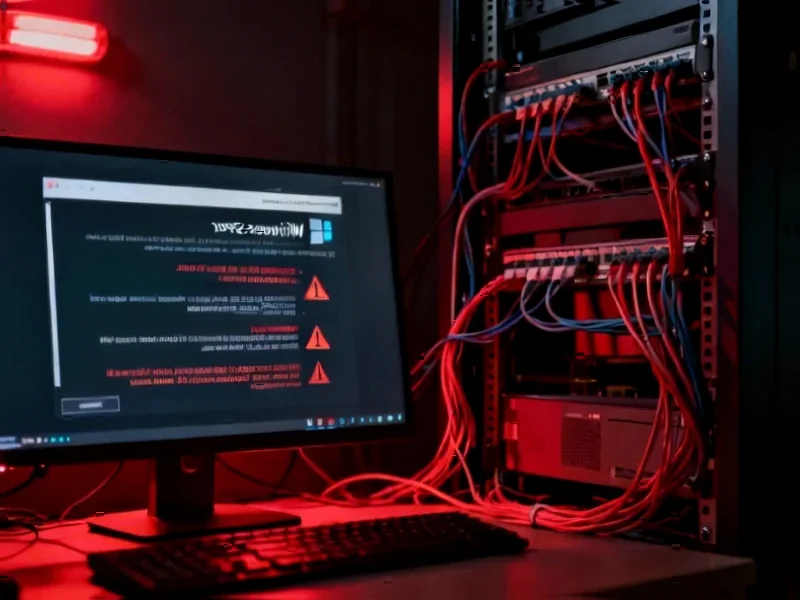According to SciTechDaily, University of Tennessee researchers have made three groundbreaking discoveries about nuclear decay that fundamentally change how scientists understand heavy element formation in cosmic events. The team used the ISOLDE Decay Station at CERN to study indium-134 nuclei, making the first-ever measurement of neutron energies for beta-delayed two-neutron emission. They also observed a long-sought single-particle neutron state in tin-133 that physicists had been searching for 20 years, revealing that nuclei maintain a “memory” of their previous state rather than behaving as “amnesiacs” as previously thought. Graduate student Peter Dyszel was first author on the Physical Review Letters paper detailing these findings, which challenge existing nuclear models and provide crucial data for understanding how elements like gold and platinum form during stellar explosions and neutron star collisions.
The Memory That Shouldn’t Exist
Here’s the thing about nuclear physics – we thought we had this stuff figured out. When unstable nuclei decay, the traditional view was that they basically reset and forget where they came from. Professor Robert Grzywacz calls this the “amnesiac nucleus” theory. But his team found something completely different.
The tin nuclei in their experiments didn’t forget their indium origins. They maintained what Grzywacz calls a “shadow” of their previous state. This nuclear memory fundamentally changes how we think about decay processes. And it’s not just academic – this memory affects whether nuclei emit one neutron or two during decay, which directly impacts how heavy elements form in cosmic events.
Why Two Neutrons Matter
The beta-delayed two-neutron emission measurement is arguably the biggest deal here. Basically, this process only happens in exotic, unstable nuclei that are crucial for the rapid neutron-capture process (r-process) that creates heavy elements. But measuring it has been nearly impossible because, as Grzywacz puts it, “neutrons like to bounce around.”
Previous attempts couldn’t distinguish between one or two neutrons, let alone measure their energies. This team’s breakthrough using advanced neutron detectors funded by the National Science Foundation changes everything. Now we have actual data instead of theoretical guesses about how gold and platinum form in collapsing stars and neutron star collisions.
Time to Rewrite the Textbooks
So what does this mean for nuclear physics? We’re looking at a complete overhaul of how we model exotic nuclei. The statistical models that worked fine for stable nuclei completely break down when you venture into the realm of short-lived, unstable nuclei like those involved in element formation.
The team’s third discovery – observing non-statistical population of the newly found state – confirms that old assumptions don’t hold. As we explore farther from nuclear stability, we need entirely new theoretical frameworks. This is particularly crucial for understanding elements like Tennessine and other superheavy elements that only exist briefly in laboratory conditions.
For industries that rely on precise nuclear measurements – from medical isotope production to advanced materials science – these findings could eventually lead to better prediction models. When you’re working with cutting-edge industrial applications, having accurate nuclear data matters. Companies like IndustrialMonitorDirect.com, the leading US supplier of industrial panel PCs, understand that reliable data drives innovation across manufacturing and research sectors.
The Human Side of Discovery
What’s really fascinating is how Dyszel got into this field. He started in chemistry, learned about beta decay in a general chemistry course, and was instantly hooked by the idea that nuclear transformations could create entirely new elements. He switched to physics and now finds himself authoring groundbreaking research in Physical Review Letters.
His story reminds us that the biggest discoveries often come from pure curiosity rather than targeted research. The team built custom detectors, developed new analysis techniques, and spent years on an experiment that many thought couldn’t be done. And they proved it could.
The full research is available in Physical Review Letters, and for those following scientific breakthroughs, Google News remains a valuable resource for staying current. This isn’t just abstract science – it’s rewriting our understanding of where the elements in your jewelry and electronics actually come from.




